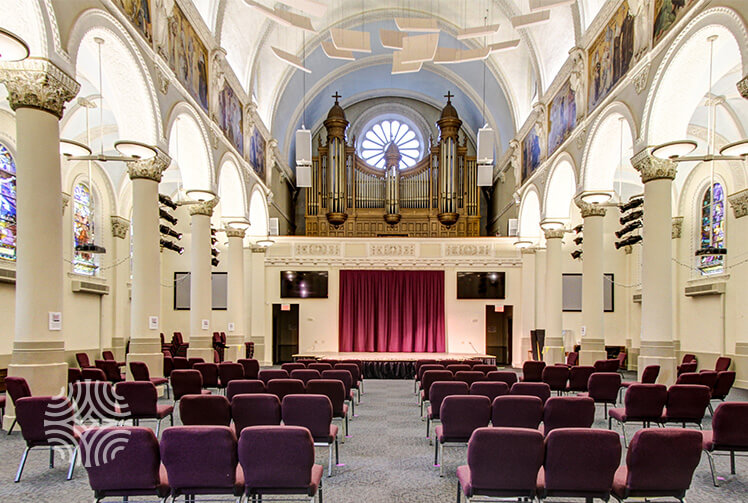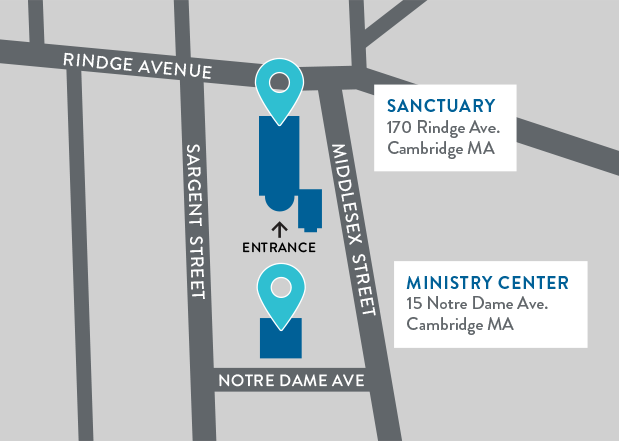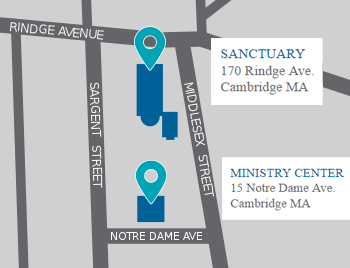Blog

What Is the Difference Between Contemporary vs. Traditional Churches?
August 22, 2023
Christianity today takes many different forms, from the ritualistic liturgical styles of Catholicism and Orthodoxy to the more freeform worship found in contemporary churches. With so much diversity, you have options when deciding what kind of church might be right for you.
Many churches blend tradition and contemporary elements, and at Reservoir Church you’d find this to be true. Many churches on each end of the spectrum usually share a few common characteristics.
What Is a Contemporary Church?
Essentially, a contemporary church’s mission is to create a space of worship that is open and accessible to everyone.
Most contemporary churches are:
- Independent: Not part of a larger organizational structure
- Nondenominational: Not affiliated with a larger network of churches within a specific faith tradition
Instead, they focus on the core message of Jesus and Scripture. That’s why contemporary churches often describe their theology as “Jesus-centered” or “Christ-centered.”
What Is a Traditional Church?
Tradition is defined as passing on beliefs, practices and customs to new generations. A traditional church usually has roots in an established faith tradition that has been passed down for centuries — this is why most traditional Protestant churches belong to specific denominations like Lutheranism or Episcopalianism.
Often, these churches place a high value on structures and rituals like baptism, Holy Communion and the traditional liturgical calendar. While many contemporary churches also practice these rituals and believe them to be important, they place less emphasis on them.
Traditional vs. Contemporary Church
Both traditional and modern churches have the aim of preparing their congregations to hear and respond to God, though the ways in which they accomplish this goal differ. Here are some of the most notable differences between traditional and contemporary churches.
Music
For many, the music is one of the biggest differences between traditional and contemporary churches. A service in a traditional church usually involves singing along to hymns from the 18th to the early 20th centuries with the accompaniment of a choir, an organ or both.
More contemporary churches will use newer worship music that resembles the cultural styles of the congregation (i.e., drums, guitars). It’s not uncommon to have a praise and worship band playing throughout the service, and there are often screens near the front of the church that display the lyrics so the congregation can follow along.
On that note, you’ll almost always find people in traditional churches using physical Bibles or hymnals to follow along with the service. Many contemporary churches use digital versions to save paper, such as displaying the relevant passages from screens or providing the congregation with QR codes.
Architecture
Appearance is one of the most easily noticeable differences between modern versus traditional churches. While you may find many contemporary churches holding services in traditional-looking buildings, and many traditional churches look pretty modern, there are some distinct stylistic differences between the two.
Newly constructed contemporary church buildings tend to have simple interiors with minimal decorations. While some are in buildings with experimental architectural styles, many hold services wherever they can find space — some examples include school gyms, theaters and hotels. Logistically, there is little possibility for permanence, which is why a minimalistic style is so practical.
Traditional churches tend to use older architectural styles. Inside, they’ll often have more elaborate decorations, like enormous stained glass windows and murals depicting the life of Jesus. Some contemporary churches are in traditional-looking buildings with modern additions, like TV screens in front of the congregation.
However, architecture tends to vary widely between churches, so it’s important to remember that every church is more than just the building.
Formality
You may find members of a more traditional church tend to come to services dressed in their “Sunday best.” Ministers wear specific vestments, or robes, to show reverence to God and to reflect the sacredness of the service.
At a contemporary church, the atmosphere is usually a little more laid-back. People are welcome to come as they are, whether they’re in their best dress or their work uniform after a long shift. This reflects God’s undying love for all of us as our most authentic selves.
Community
Another difference between contemporary and traditional churches is the approach they take to their community.
Contemporary churches are often described as more “community-driven,” focusing sermons and programming around the immediate needs of their local communities or centered in issues of social justice or action-driven faith. You might hear sermons on how the Gospel relates to the political and social issues surrounding us today, and you might find that many different people have the chance to lead.
Traditional churches are also very community-driven, just in a different way. They tend to emphasize the universal truths of our faith — God’s everlasting love, Jesus’s teachings and the importance of staying faithful even in our chaotic world. You’ll usually find a variety of ministries available to church members as well as community service opportunities.
Elements at the Core of Both Contemporary and Traditional Churches
Whether you attend a more traditional church or a contemporary one, there are some core elements one can engage with. Here are some ways you can participate more fully in the life of the church:
- Community: Don’t go it alone. Do it with others in the community.
- Pray: Whether you belong to a traditional church or a more modern one, prayer is at the heart of every Christian’s life. During the service, take time to meditate on the teachings you hear and pray for guidance.
- Scripture: Understanding the meaning of Scripture can be challenging, which is why we make room for unpacking essential concepts like religious history and translation differences. Taking some time to read in preparation can help you understand the passage’s messages on a deeper level and connect to our loving God one-on-one.
- Spiritual practice: Church services are meant to teach you actionable spiritual practices you can take with you into every area of your life — in your work place, in the greater community and with the people you love.
- Volunteer: Participating in the life of the church is a great way to practice the Christian tradition of loving your neighbor. Most churches offer opportunities for community service.
Our Mission at Reservoir Church
At Reservoir Church, we believe the teaching, practice and person of Jesus are vital for guiding us to the divine. We put Jesus at the center of everything we do, from our Sunday services to our children’s programming.
We are inclusive, which means we welcome everyone without exception. Whatever your race, gender, sexual orientation or background, you have a place here.
We understand that everyone is in a different place on their faith journey, and we strive to create an emotionally, physically and spiritually safe space for people to meet God where they are. An honest exploration of faith is more important to us than conforming to any specific dogma or doctrine because we believe that the Holy Spirit will guide all to the truth.
Come Join Us in Worship!
If you’ve been looking for a welcoming church in Cambridge, Massachusetts, we humbly invite you to join us at a Sunday service. We offer in-person and online services, and everyone is always welcome — no exceptions. Click here to connect with us by subscribing to our email list or by exploring our service opportunities.
Need a little more information before you come by? Our Frequently Asked Questions page can help you get a better feel for who we are and what we stand for. You can also watch a recording of a past sermon to get an idea of what to expect on Sunday morning.

